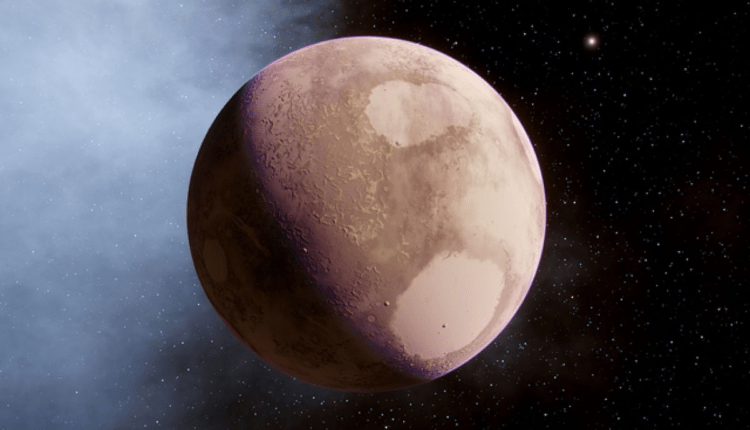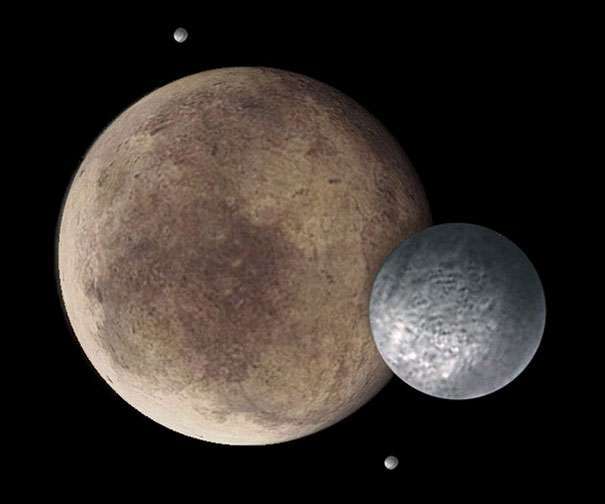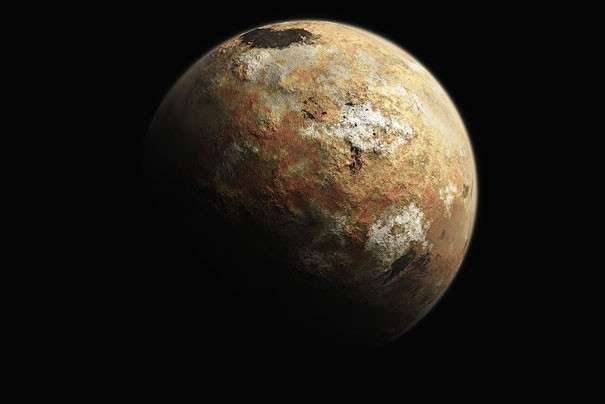A few years ago, Pluto was stripped of the status of a planet in the solar system and transferred to the category of planetoids or dwarf planets.
History of Pluto
This celestial body was discovered by Clyde Tombaugh in 1930 as a result of observations from the Lowell Observatory in Arizona. Even before that, astronomers had assumed that there should be another planet in the solar system, the ninth in a row. She was conditionally given the name "Planet X". Tombo was assigned a routine task: he had to compare many photographic plates with an image of the sky, captured at two-week intervals. If a moving object hit them: a comet, an asteroid or a planet, then it would have to change position in different photographs.
After spending a year observing, Tombo eventually noticed a suitable moving object and announced the discovery of a new planet. As a discoverer, he had the right to give the planet a name, for which he took advantage of the suggestion of a school student from Oxford, who advised naming the planet after the ancient Roman god, the ruler of the underworld. So the Sun became nine planets.
Until the discovery in 1978 of Pluto’s moon Charon, astronomers could not accurately determine the mass of the planet. Having calculated its mass, which amounted to only 0.0021 of the weight of the Earth, it became possible to estimate the size of Pluto. According to the latest data, its diameter is 2400 km. Pluto turned out to be just a crumb, beyond which, as it was believed, there is nothing more significant in the solar system.
The occurrence of a problem
The development in recent decades of much more powerful observatories, both on Earth and deployed in space, has significantly changed our knowledge of the outer limits of the solar system. Pluto unexpectedly turned out to be not the last planet in our system, but one of a large number of objects included in the Kuiper belt, the beginning of which began to be diverted after the orbit of Neptune and up to a distance of 55 AU. e. from our luminary.
Recent estimates by astronomers suggest that there are at least 70,000 icy bodies in the Kuiper belt that are at least 100 km or more in diameter and have a composition similar to that of Pluto. The dog is buried here, why Pluto was no longer considered a planet – the fact that its orbit is densely populated with objects similar in characteristics. So Pluto was downgraded and is now one of the vast number of objects in the Kuiper belt, along with several other objects, is a dwarf planet. Starting at one time with the discovery of Pluto, astronomers in subsequent years discovered more and more new transuranium objects.
For example, the dwarf planet MakeMake, discovered by the team of Mike Brown at the California Institute of Technology, turned out to be only slightly smaller than Pluto itself. Then there were similar discoveries – Sedna, Haumea, Orc and others also appeared. For scientists, it became obvious that the discovery of an object larger than Pluto itself in the Kuiper belt is only a matter of time.
And the same team of American astronomers in 2005 was able to detect another object beyond the orbit of Pluto, which was supposedly the same size, and maybe even more.
Eris may be smaller in diameter than Pluto, but it definitely surpasses it in weight. Data on this celestial object was clarified during its passage between the Earth and a star located farther away – a decrease in the brightness of the star’s glow was measured. The first data gave an estimate of the diameter of Eris at 3,000 kilometers. Then the Spitzer space telescope was connected to the measurements, which made it possible to slightly “squeeze" the diameter of the planet to 2600 km, and when Hubble did the same, the most accurate data on the diameter of this planetoid appeared at the moment – 2400 km. The diameter of Pluto is now taken as 2300 kilometers. Observation of the shadow of Eris also provided some information about its atmosphere.
Before scientists, the refined diameters of both trans-Neptunian objects posed a new mystery: why, with close diameters, do these space objects differ so much in mass?
So, at that time, the following picture emerged before scientists: in addition to the planet Pluto, the same composition (a mixture of stone and ice), but much more massive Eris, was discovered. There were two ways to proceed:
- Count Eris as another new planet and thus bring their total number to 10 with the almost inevitable prospect of further replenishment of the number of planets due to newly discovered Kuiper belt objects of similar size.
- "Degrading" Pluto from the planets, lowering it to the status of one of the Kuiper belt objects.
On this issue, real battles unfolded in scientific circles, and disputes did not subside for a very long time. The final decision on this issue was to be taken by the 26th General Assembly of the International Astronomical Union, held in Prague in August 2006.
Video about why Pluto is no longer considered a planet
"Demotion" of Pluto
The members of the association were presented with several options for classifying the planets, for one of which they had to vote. So, according to one of the options, the number of planets could increase to 12 – to the already existing ones one would have to add not only Eris, but also Ceres, which was considered the largest asteroid in the inner asteroid belt. There were proposals to leave 9 planets, there was also one that suggested simply excluding Pluto from the number of planets. But not to consider it, after all, an asteroid?
Having broken many copies, scientists have chosen a rather bold, but the most logical option, revising the status of Pluto. That’s why Pluto was removed from the list of planets, and since then it and similar objects have been relegated to the new category of dwarf planets.
Last accepted definition of planets
The International Astronomical Union has adopted a classification according to which, in order to be included in the number of planets, a space object must meet four basic requirements:
-
The object should revolve around our star – the Sun, and not be a "tourist" flying through its vicinity.
-
The massiveness of the object should be enough to form a spherical shape, and not be shapeless, like asteroids.
-
The object must revolve precisely around the Sun, and not be a satellite of any of its planets.
-
The trajectory of the planet must be cleared from other objects by it.
Satisfying the first three requirements, Pluto could not meet only the fourth, and therefore was removed from the host of planets. What does the last requirement made by astronomers mean? At the moment of its formation, any planet becomes the dominant gravitational body in a given orbit. This means that when interacting with smaller bodies, it either attracts them to itself by gravity, or pushes them away from orbit. In the case of Pluto, its mass is only an insignificant 0.07% of the total mass of objects rotating in the same orbit. Compared to the Earth, it is heavier than all its fellow travelers taken together by as much as 1.7 million times!
But, since if any object does not meet at least one criterion, then it can no longer be considered a planet, then this has become a kind of “trap” for Pluto. With the development of instrumental, and hence the observational capabilities of mankind, many bodies have already been found in the solar system, and there will be many more bodies resembling Pluto in mass and size and moving along the same orbit with it. To become a real planet, Pluto will have to work for many millions of years and take all these objects “into hands” or clear its endless road circling around the Sun. A similar task is facing Eris.
Despite the transition to the status of dwarf planets, Pluto has not lost its attractiveness as an object of research. Just recently, in August 2015, another historic mission took place – the flyby of the New Horizons automatic station near Pluto, as a result of which humanity has already received a number of impressive images of its surface, and will receive more detailed information about this contact for a long time to come. .
However, what we will call Pluto or other space objects is completely unimportant for the Universe, this does not affect the essence of natural processes and the laws of nature.



